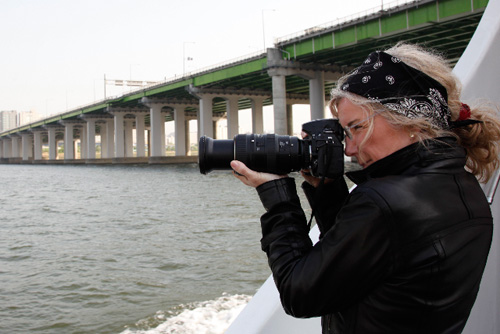
[Editorial Note: This post contains images and stories pertaining to child slavery. If you do not wish to view these, do not click through to the full article]
I became a photographer to change the world. It’s just been a little bit harder than I thought it would be.
I grew up in Iran, and by the time I was twelve I had been around the world twice with my family, and had visited twenty countries along the way. I wanted to find a career that would keep me out in that world, and journalism—especially photography—seemed perfect. I saw the role that photography had played in ending the war in Vietnam and wanted to join that cadre of crusading photographers.
But when I joined the staff of National Geographic, my ambitions became somewhat more modest—or realistic: I could illuminate worlds most people would never see. As a journalist, I loved telling stories, and especially loved being behind closed doors in intimate situations that revealed something about the human condition. I tried to get that kind of photograph into every story, no matter how complicated the assignment or vast the terrain.
And they were big: cities (Jerusalem, Los Angeles, London, Hong Kong, Helsinki, Nashville, Shanghai and Venice) and countries (China, Jordan, Thailand and Taiwan). But my later stories on the women of Saudi Arabia, the geisha of Japan, and the science of beauty and love let me make the kinds of photographs I liked best. I was able to enter some very private places indeed—some never photographed before—and share them the world.
But then a newspaper article about Congress passing the Anti-Trafficking Act caught my eye and I knew that contemporary slavery was an issue I had to try to make sense of. It would be the culmination of all my passions and experience.
“21st Century Slaves” is the story about how an estimated 27 million people in the world today live as real slaves—bought and sold against their will, held captive, brutalized and exploited for profit. The trafficking of human beings has become the world’s second-largest criminal activity.
Globalization has made it easier to move goods and money around the world, but tough restrictions on legal migration make it hard for people to move where the jobs are. Ruthless criminals—the mafias of Russia and Albania, the Triads of China and the Yakuza of Japan—are only too happy to help. Tragically, people are likely to end up in debt to their smugglers and are forced to work off their debts as slaves.
It was an under-reported story in this country, and National Geographic had the resources to put together a comprehensive, worldwide look at the issue. Not many organizations could provide the time for research, planning, making connections, gaining trust—and none had—but it was still a magazine story with a real budget for time and money. The Editor, Bill Allen, had reservations: was it the kind of story National Geographic’s readers would embrace? He could imagine subscribers quitting in droves. But he also felt it was a story that he had an obligation to publish.
But if he was worried, I was panicked. How could I pull it off? I hunkered down with the great Illustrations Editor Susan Welchman and we started making lists. What kind of slavery existed and where? Where could I actually see it—and shoot it?
Our list was a catalog of misery. Child labor, bonded labor, organ trafficking, illegal adoption, domestic slavery, agricultural slavery and the commercial sex industry. We researched where it was most visible, and who could take me there. So I set out on my tragic journey.
I went to India because millions of kids work there, the highest number in the world. They are sold or kidnapped into industries like carpet and silk weaving and glassmaking. As a horrible bonus I could also find bonded labor, illegal kidney trafficking and a thriving sex industry. Falkland Road in Mumbai is one of the largest red-light districts in the world, where huge numbers of women are sold, lured and tricked into prostitution. Some enter that world knowingly, but don’t expect to become enslaved, and have no idea what’s in store for them. My Indian assistant Neha and I would spend the day in the brothels—nasty, stinking, sweltering buildings packed with girls and women of every age, clients of all kinds and babies that would grow up with no future but to enter the family business. We’d go back to our car and weep. And return day after day.
It was a short hop up to Nepal, where I found a thriving organization rescuing girls trafficked to India—a small ray of hope. On a quick side-trip to Israel, one of the world’s largest importers of Eastern European women, I photographed a police raid on one of the hundreds of brothels in Tel Aviv. In Thailand, an American religious organization tilting at windmills would prove that once prostitution becomes part of a country’s official economy, it becomes impossible to eradicate or reform. Their attempts to rescue some underage girls, with me in tow, failed. There was always an inexplicable tip-off.
Illegal immigrants can easily end up in debt bondage when they can’t pay their smugglers, and in Italy I found entire Chinese families, babies and all, toiling in factories for luxury leather goods. I was able to grab a picture of them sewing Gucci labels into hats and bags. “Shoot fast and scram,” Cartier-Bresson said—and I did.
Domestic slavery exists worldwide, but tens of thousands of kids are trafficked internally in West Africa. It’s the abuse of a tradition where kids from rural villages were sent to cities to live with relatives in exchange for an education and a chance for a better life. It’s now a professional trafficking operation and the kids end up enslaved. So Ghana and Benin went on the list, and I found 14-year-old mechanics in rags working without rest or pay, and tiny kids balancing huge baskets of fruit and vegetables on their heads, staggering through the markets, selling for their masters.
So is there debt bondage and slavery in the U.S.? Experts estimated that perhaps ten percent of all farm workers here are enslaved. The Coalition of Immokalee Workers in Florida has broken up nine slave rings in the American south, freed over a thousand tomato pickers from debt bondage and successfully taken on huge corporations like Taco Bell and McDonald’s. I went with them on their hunger strike at Taco Bell headquarters, and then to the U.S. Capitol to pick up their Robert F. Kennedy Humanitarian Award—another rare moment of hope.
But let’s talk about Bosnia. Post-conflict societies are often the hardest hit by traffickers, and Bosnia must top the charts. The writer, Andrew Cockburn, came back to National Geographic with tales of a war criminal and sex trafficker so brazen that he taunted the media with statements like “Is it a crime to sell women? They sell footballers, don’t they?” Andrew had visited his medieval-castle-themed motel-brothel, populated by—besides enslaved Eastern European women—caged tigers, bears and pit bulls. Andrew couldn’t get any locals to accompany him out of fear for their lives, but had managed to interview him. I was determined to photograph that face of evil. I’ll call him MM because I’m still afraid of him.
So off to Sarajevo I went. I hired a young local Bosnian Muslim—a dental student before his life had been ripped apart by the war—to drive and interpret for me. I’ll call him J, because he too is still afraid. We spent a couple weeks working together, traveling in his battered car and making up movie plots to pass the time. We drove for hours in UN convoys on brothel raids that were usually thwarted by ubiquitous tip-offs. We cruised by brothels in the countryside looking for evidence and finding it. And we visited shelters for rescued girls (most were underage) run by brave local women defying criminals so bold they would come to the shelter to get their girls back—even though the shelters were under armed guard. The girls were traumatized and broken. One had a nail driven through her hand, another a syringe buried in her arm. I saw one with cigarette burns all over her body.
When the rare brothel raid succeeded, UN forces would storm in, separate the girls from their captors and interview them. Their stories were depressingly similar. Lured from their poverty-stricken homes in Moldova, Romania, Ukraine and such by friends, relatives or others promising good jobs abroad, they were smuggled into Bosnia by well-organized criminal syndicates who then raped them “to test the goods,” tortured them into submission and sold them at open-air markets to brothel owners—who then forced them to be with ten or more men a night in indescribably brutal conditions. The UN officer would then ask the girls if they wanted to return with them to Sarajevo for help, and a distressing number refused. Too many UN officers had been their customers. I rode back to Sarajevo one night with a 16-year-old who accepted the offer of rescue, and we both cried as she told me her story.
When I had exhausted the official sources it was time to take on MM. A Serbian journalist with major underworld connections met me at a truck stop café to warn me: MM was ruthless … death threats … bombings … journalists beaten on the streets … legs blown off … car-bombs. He asked for money for the warning.
But J agreed to come with me, and we nervously drove six hours to Prijador to the Sherwood Castle. We walked in past the heavily armed security guards, introduced ourselves and asked for MM. He soon rushed in, beefy, sweating and offering me his hand. I asked to photograph him and astonishingly, he agreed. I shot him with his caged animals and a stuffed tiger, a former pet—his wife behind me angrily chattering the whole time. J later said she was berating him for cooperating. He invited us for lunch, and too terrified to refuse, we sat down for an agonizing meal. We finally bolted, and on our way out, MM asked for a donation from National Geographic to his zoo.
J and I decided not stay in the Prijador hotel we had booked, and raced the six hours back to Sarajevo, mostly in silence. Our car was followed.
A few months later, J called from Sarajevo. He had been living in fear of MM after the publication of his photograph, and I too had been half expecting him to show up on my doorstep. So with great relief I heard he’d been arrested for trafficking two hundred women. He has, however, escaped.
And so it went for the year it took to produce the whole story. But it took me even longer to recover from searching for evil day after day and finding it. Nothing in my life had prepared me for the ruthlessness, heartlessness—the inhumanity—of trafficking. I was in fear or in tears the whole time. But it’s the most important story I’ve done and generated the biggest response in the history of National Geographic until then.
So maybe I didn’t change the world, but that world changed me—profoundly and irrevocably. I notice things I never did before. I don’t think of prostitution as a victimless crime, and I don’t think that buying stuff really cheap is as fun as I once did. Someone makes that stuff, and in the drive for lower and lower prices, the temptation is just too great: there is no cheaper labor than a slave.
You can see more of Jodi’s work at JodiCobb.com



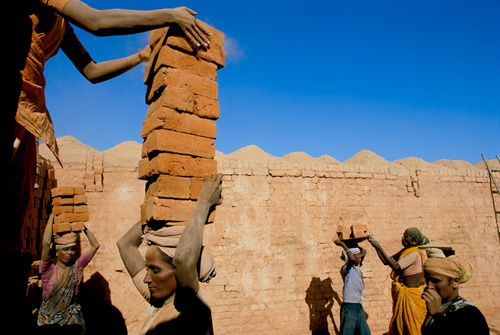
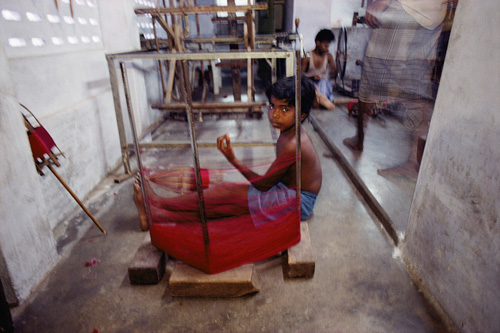
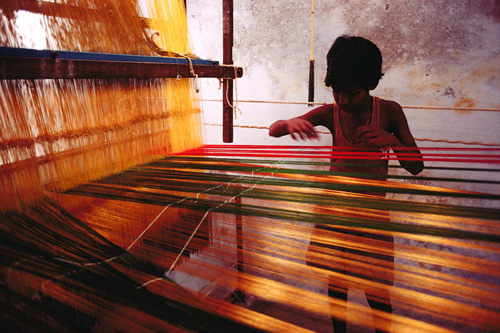
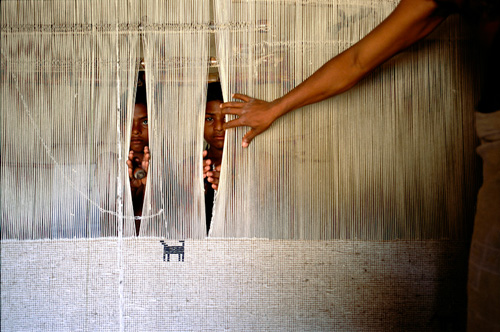
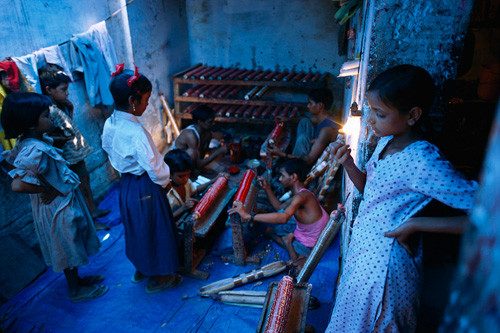
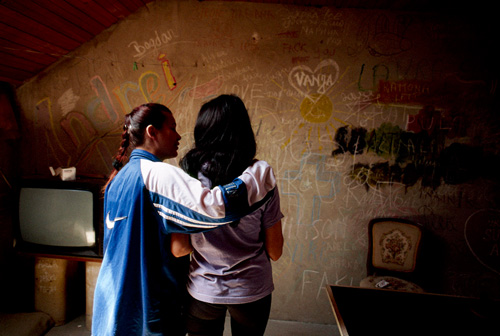
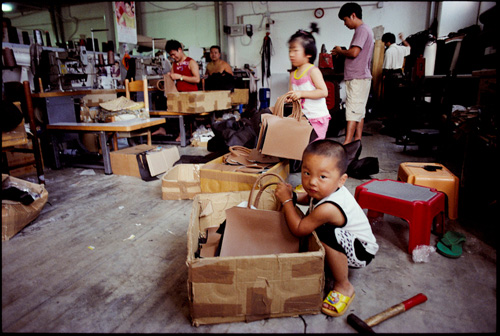
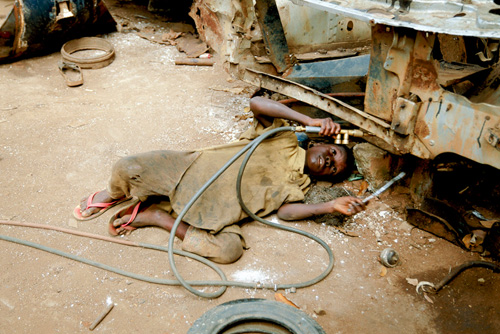
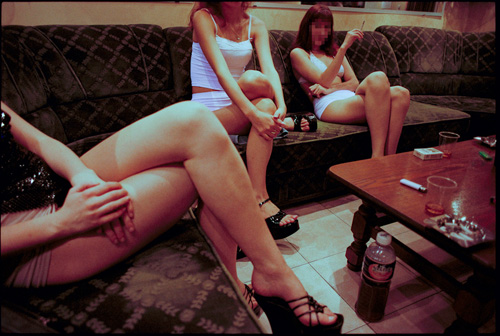
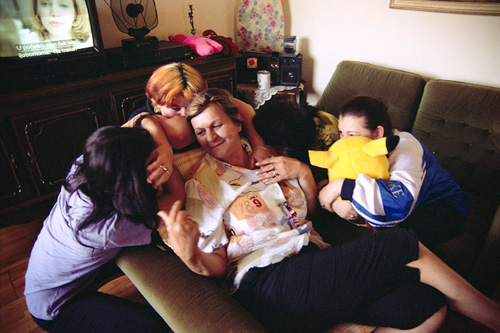
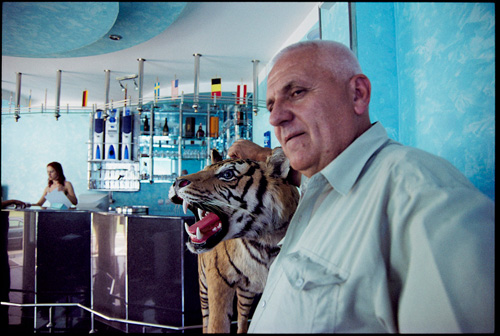
Jodi, your courage to make these images and tell the story is inspiring (and profoundly depressing at another level). Thank you for shining a light on evil.
Jodi, this is the most amazing heartbreaking blog ever on Scott’s site. Those of us living in a free country can’t understand what you have witnessed. Be safe, your in our prayers.
KT
Ken,
I’ll have to agree with you here, “Jodi, this is the most amazing heartbreaking blog ever on Scott’s site.”
The read of it’s so beautiful I’m sure I’ll be reading that a few more times throughout the day / the week and sharing that with a ton of people!
I’m sitting here like wow…still like wow!
To start, I’m jealous of the life you life…in a way…and then again I’m like….ummm I stay right here and do what I have to do. You really do inspire me though. It’s amazing the work you did the risk you took the people you meet; you’re like then pen that writes the script of a movie.
Speaking about move, they entire time I had the movie “Taken” on mind; MM looks like the fat dude at the end of the movie as well on the yacht. I’m sure you’ve seen it, but if you haven’t go and watch it right away. Stop reading this, stop doing what you’re doing and go and watch the movie!
You are a brave lady.
Reading that make me never want to complain about anything that goes wrong in my life ever again; it’s worse out there.
–
Dwayne
Ken,
I know it’s “better” here, but don’t overlook “Florida,” “McDonald’s“ or “Taco Bell“ or the “nine rings in the American South.”
Unfortunately, we are not all innocents here.
Jodi, Thank you for sharing your story. You are an amazing women who risked her own life to help the world understand such important issues.
Thank you for sharing. These stories need to be told, and you have told them so profoundly. I really appreciate reading a blog that moves me. I am not just looking at a computer screen of good photography, but of faces and people and hearts and lives and a cause bigger then myself. I am moved beyond tears, and into action. I am sincerely grateful for the work you have done and the stories you shared.
Excellent. I’d love to hear a photojournalist’s opinion on the contrasting reactions of today’s general public compared with the past.
wow, Jodi, that is one hell of a story, and an important one to tell. You are a brave woman. Most in this world have no idea that these kind of stories even exist in our world. Good for National Geographic to agree to do the story, and good for you to take that difficult journey…you are certainly doing your part to “change the world”!
Thanks, Jodi – courage, passion, tenacity – thank you.
Scott, Jodi is fabulous, more like her, please!! She’s passionate, talented, smart. I love that this post is about the work. Sometimes, the featured photographer seems more about the guy than the work. Probably not expressing this well, the posts are much more engaging when they focus on the story, and less so when they focus on the photographer.
An engaging, and chilling story. The depths of depravity, cruelty and greed are just stunning. Thank you Jodi, and thank you Scott for featuring her.
I am overwhelmed and deeply saddened by your story. Man’s inhumanity to each other is incomprehensible. I know how sick I feel right now just by reading your story. I cannot imagine how you must feel. Your courage and conviction are amazing. (by the way amazing doesn’t do you justice but it was the only word I could think of.)
Thank you for telling this horrible story. As a average American Citizen, what can we do to help combat this awful evil? The other thing that I find absolutely incomprehensible is how “we” allow this to continue. Why the UN / USA / other civilized nations (governments) do nothing?
I truly have found a new person to admire. God Bless You.
Regards,
Dave
Such a powerful story. You have got guts ! big time. Story is inspiring to people and to photographers who want to live their lives like yours.
Keep up the good work.
Visiting your website as I type.
to Scott / Brad – Is something wrong the rss feeds. I am receiving all replies as feeds in my google reader. Could you kindly check whether it’s just I who is facing this or everyone.
Having the same problem as Girish with my G-Reader. Releuctantly turned you off, kept getting many old comments in my reader… – Thanks ~
So shocking and sad that people could treat others this way. I admire your courage, determination, and will to face such terrible things to shed light for the rest of the world who may have never seen or heard about this situation. The visual element presented here makes it so much more real and terrifying.
Thanks for sharing.
Wow! What a powerful story you shot! Here I am, a shooter in a conservative area of Philadelphia, not realizing what horrible things are going on in the rest of the world! And I admire you for having the guts to shoot this, in spite of the dangers and sorrow you encountered while covering this for Nat Geo!
Thank you Jodi Cobb!
Tom
An important story that makes you wonder what the real cost of ‘cheap’ is. Bargains for us as consumers may not be bargains for all throughout the supply chain. Perhaps as disturbing as the main story is the sub-story in the editor’s note and the reservations of the NG editor on what the story might do to the readership – hiding from these stories won’t make them any less true. Ignoring them won’t make them go away. And, if you change the behaviour of just one person, you have changed the world.
Jodi
I started reading this edition of NG in the chair at my barbers and afterward I dawdled (on the pretext of avoiding the rain) to finish the compelling tale.
Your photographs highlighted the simple humanity of the victims of slavery of all kinds. My heart still aches for the children for whom there is no childhood and my soul still cries for the women without hope of true love.
The power of photojournalism in such a story is extraordinary. In the age of television & internet the moving image has lost some of its ability to move. But the captured moment in still photograph is something that we can all relate to. Your photographs have a candid quality akin to the traditional snap of family and friends gathered to eart, or talk or work together. However the menace of the situation that each of your subjects find themselves in which makes the “candidness” even more striking. The single moment frozen in time seems to emphasise your subjects endless suffering!
Bravo. Well done. Keep up the good work.
Please reassure your editor that this story earned at least 1 new subscriber. I will not have to wait for another haircut for the next groundbreaking NG story.
EamonD
Jodi, I couldn’t read this and not comment. I don’t have to words to express my respect and astonishment at your determination to tell a story like this. Thank you for taking this on and letting the world know what’s happening.
Incredible, but not surprising story Jodi. Maybe now people will finally see that “cheap” is not so “cheap” anymore. You are doing us all a great favor by risking it all to expose the other side of humanity. Thank you for you efforts and I applaud your bravery!!!
Great Story!!!!
I could spend all day replying to this story, but really it all boils down to one word. Amazing.
Thank you for your sacrifices in bringing this to light; ignorance is bliss, but knowing allows us to help make the change.
I am moved by your story. Thank you for offering it here. Thank you Scott for giving Jodi the chance to share this story. I have not shared that many stories before, but this one needs to be told and if possible seen. I admire your work, but even more your heart Jodi. Thank you again for this life altering message.
Incredible story and images. How brave your are!
The world needs more people like you.
Thanks so much for sharing and for your courage in bringing this
to the light of day.
We all have to be reminded of these realities and we all
need to work to make this world more humane Without people
like you all this can remain hidden from our view, our thoughts and
our indignation!
Thanks again.
Jodi don’t be modest. You have changed the world. You’ve affected and moved many of us, that’s changed our world. Your images are honest. Painful and honest. If you do nothing else with the rest of your life (and I hope you do) at one point in time you’ve told the truth, shown the truth, stood up for the truth, suffered for the truth. That’s an inspiration that will carry on changing the world. Thank you.
Scott, thank you so much for publishing this heart-rending post. It was essential as part of this series but also maybe as a counterpoint to so much of the good stuff and shiny baubles we encounter in our privileged daily lives, even on your upbeat blog.
Jodi, thank you for the work you do. This was an unbelievably brave tour-de-force. To me is is exactly the kind of thing I subscribe to Nat Geo for – in depth stories on humanity and the natural world and our impact on them. I fear more may need to come out closer to home, but hope not. Though it has deeply affected you, changed you, I hope that the despair you felt does not linger with you the whole time. There is also good in this world such as you embody. Thank you again!
Excellent work, Ms. Cobb.
And maybe now Mr. Kelby will re-think his “Hi, it’s PIMPY Thursday, yay!” stylings. Because this article tells you what pimps are. The word “pimp” has NOT passed into common parlance among most people. I like this blog but am really uneasy with Kelby’s use of that word. Pimps destroy so many lives, families, and souls.
Can we help Mr. Kelby by choosing a better description for his Thursday posts?
How about,
“It’s Fantastic Featured Thursday!” Okay, lame. Other readers, can you do better? I’m sure you can…
JayDee: It’s not “Pimp Thursday.” That would be a reference to prostitution. Pimpy is a different word with a different meaning, and according to the Urban Dictionary Pimpy is defined as :
“An adjective for describing something that is pimped out or done extremely well with more bells, whistles and bling than it possibly should have. Often used in office culture to describe how one’s work can be a shining example to others.
That laptop is pimpy. Make it pimpy!”
Scott, thanks for replying. We’ll just have to disagree on this one.
Dear Jodi…
I’m not sure where / how or what to single out to comment on, so, I’ll say this;
You are a hero! An inspiration! …Amazing! I want so desperately to help in some (any) capacity as you and your recount / work have truly moved me.
I am going to gather my thoughts and send along a note. God Bless and protect you as you go after these life altering, world political and geo-political altering assignments. You have shown us all the real power of human spirit and the importance, power of an image – how photography can make a difference and turn a written story from lands that seem too far away; To a face in my living room I can cry for, reach out to (know) or loathe – the “story” is solidified and real!
Scott, thank you for providing this venue where such a story can meet an audience that, speaking for myself, may never have known these horrors still take place and allowing me the opportunity to pursue an avenue to try and help make, possibly making s difference.
Doug
Scott: Jodi certainly has clearly demonstrated a modern day, profile in courage. She portrays through her pictures human beings who are so often forgotten. Thanks, Jodi. Thanks.
Jodi – please keep shooting! Your work makes a difference! I am praying for you. Scott – thanks for being bold and sharing these photos and information. Your forum is a large one – you can make a difference too!
Wow Jodi, what an excellent story. Thank you for bringing awareness about this problem. I suppose I knew it existed, but not in America. What was I thinking? Your words really did bring the realism to my mind that wasn’t there before I read this.
Thanks again
Mike
PS Brad & Scott thanks for this series EXCELLENT!
Jodi, thanks for sharing this moving story. Too often, we get wrapped up in out lives and fail to realize or pay attention to what is going on in the world. I am always amazed at man’s inhumanity to man.
Scott, I have to say that the guest bloggers this year have been amazing. I noted earlier in the year that I thought Moose’s guest blog had set the bar, but every week another guest blogger raises that bar higher. Thanks for giving them a voice and letting us hear it.
–John
I just recently saw the movie “Whistleblower” and left the theatre as angry as I’ve been in a long time. Your story reinforces much of Kathryn Bolkovac’s story about the activities in Bosnia and the high level government involvement, or tolerance, of the trafficking. I hope you keep up the effort and I’ll try to follow along. I wish there was something I could do to help.
Jodi, Awesome and inspiring. Thanks for sharing.
I am in awe. What else is there to say?
Jodi, Bravo. Keep up the good fight!
DAMN good read and pictures. Very moving!
Jodi Cobb is an inspiration! Her photos and stories force us to reconsider what is important in this world.
Jodi, I am so incredibly proud of you and what you stand for. The world is a better place because of you and your amazing courage and tenacity. Bravo!!
It amazes me that this article has only 40 comments. Stories like this one are tough to read (hence the disclaimer on top), but very necessary on my opinion.
I only have to thank you Jodi, trully.
Jodi, I am at a loss for words. My heart has been broken again and again as I become more and more aware of this sickness in our world. You are changing the world my dear. That is a theme in our church “how to change the world.” I am a photographer as well and photos just capture my heart and overwhelm it. God be with you as you share your photos and difficult stories that NEED to be shared.
God bless!
Thank you!